手机应用开发商传授打造成功项目的十个要诀
在竞争日益激烈的手机应用市场中,开发商要推出一款更具吸引力、更富黏性、更高曝光率和更能吸金的应用真是越来越困难了。据称iTunes应用商店的产品数量已经接近35万款,Android应用商店也有25万款,就在我们说话的这会儿功夫,也有成百上千款应用已投入开发制作。不论是一款诞生于家庭作坊的应用,还是一款出自大型开发公司之手的应用,没有人可以准确预测它出击市场后的命运。
那么,究竟怎样才能打造一款极具杀伤力的手机应用呢?好创意、用心、正确的决策和大量的运气因素当然必不可少,但后来者也同样能够通过借鉴一些前人总结出的经验,推出一款出色的产品。
俗话说,要想成为人上人,就得向最杰出者看齐,以下是游戏邦编译的一些高下载量或排名靠前开发商的经验之谈:
充分考虑运行平台的特点
玩家在iPhone和掌机设备上的游戏体验截然不同,所以开发商必须了解手机屏幕的局限性对游戏玩法的影响,并根据特定的移动设备特点来设计游戏。据PopCap Games联合创始人及首席创意总监Jason Kapalka所称,牢记“iPhone手机绝非PC或掌机设备”这一点非常关键。虽然这一点是显而易见的道理,但还是有不少开发商忽略了一个事实,那就是用户在手机上玩游戏的方式,与在Wii或Xbox等更具交互性的平台上玩游戏是两回事。
“当我们针对iPhone平台开发《宝石迷阵》和《植物大战僵尸》的时候,我们花了许多时间确保游戏在触摸屏上的控制系统不出差错。有许多iPhone和iPad游戏的视觉效果都很棒,玩法也很有深度,但如果在触摸屏上的控制系统很尴尬或者令人抓狂,那么其他一切优点都没有意义了。”
挖掘移动设备的潜在功能
澳大利亚开发商Firemint首席执行官Rob Murray的看法是,开发商不能只考虑移动设备的局限性,更重要的是得跳出这种定势思维,找到该平台的发展潜力,想想“为什么用户要在这种设备上玩某种特定的游戏?比起台式电脑或者掌机设备,它的优势到底在哪?”
Murray强烈建议开发商思考移动设备对游戏运行的影响,“以《Flight Control》和iPhone为例,我们这款游戏将触摸屏功能发挥到了极致,这种控制系统很人性化,很容易上手,它与游戏机制默契地融为一体。”充分利用触摸屏等设备功能,最大限度地加强用户体验,可以让游戏更具深度,“移动技术的每一次进步,都会为手机游戏带来潜在发展机遇。”
让游戏更具个性化
Bolt Creative工作室(代表作为《口袋上帝》)的开发者Dave Castelnuovo认为,有许多伟大的发明均起源于个人需求或兴趣,应用开发也不例外。有不少开发商都过于重视占据市场份额,或者创建自认为有可能成功的应用,但却没有考虑自己个人对该产品的需求是什么。“手机游戏是个重视轰动效应的领域,所以开发商得建立良好的用户基础,你可以从自己的角度出发,让产品更能与用户建立紧密联系,而不是费力去猜测他人对产品的需求是什么。”
如果你对应用有了一些个人想法,你就会更有信心将其推向市场。如果它能和你的内心产生共鸣,那么它也能与用户形成交集。与此同时,Castelnuovo还建议开发商不要纠结于每一个单独的决策,而应该开发一款高质量的产品,设定一个更高的目标,但同时又给产品预留一定的发展空间,“我们开发原版《口袋上帝》时只花了一周时间,打算让它发展成更好更大的项目。因为我们一开始对它并没有太高的期望,所以可以轻松执行一些独特的设想。”
提前搜集用户反馈结果
俄罗斯工作室ZeptoLab创意总监、《Cut the Rope》的开发者之一Semyon Voinov强调,在开发初期让游戏在大范围人群中试试水十分关键,得将游戏交到他们手中,然后观察他们的反应如何,及时找出症结所在。“如果你发现朋友把手机还你时还意犹未尽,那就是个好兆头。”
不要在闭门造车的情况下开发游戏,提前将其交给好友和家人试玩,可以让你更好地掌握用户反馈情况,并依此进行设计调整,让最终出炉的产品更加完善。关键就是在开发过程的每个步骤中,首先让周围的熟人先玩玩看,在游戏正式登台前搜集第一手用户反馈资料。
锁定大范围的用户
Disney Mobile高级副总裁兼总经理Bart Decrem认为,开发游戏时应该心怀大众群体,这样才能争取到大规模的用户,从而获得更多成功的机会。《Tap Tap Revenge》团队在开发该游戏时,就已经想好他们要开发一款有趣、富有黏性,能够吸引大量粉丝的产品,而且还要让它同时为iOS和Android用户提供外出时的互动游戏体验,这些都是该团队笃信《Tap Tap Revenge》会取得成功的要素。
“除了提供免费下载这一点之外,我们还为《Tap Tap Revenge 4》精心挑选了iTunes排行榜上最流行的音乐,以便游戏能够为最大范围的人群所接受。最重要的事情是,一定要从目标用户角度出发来创建手机应用。”
采用免费下载模式
天底下没有免费的午餐,但有时候却真有免费的好应用。为了最大限度提高曝光率,一开始就得让应用为大众群体所接受,这样才有望通过口碑传播让它及时在市场上站稳脚跟。你知道自己有一款很强大的应用,但其他人却未必清楚,所以你得通过口碑传播打响名气,提高产品知名度。常言道,有钱说了算,但在应用领域,免费才是王道。
畅销游戏《Fling!》和《Fuzzle》的设计师、CandyGane联合创始人Michael Bevin非常支持免费模式,“创建了一款好游戏之后,你还得想法提高它的曝光率——可以举办一些活动,让它先提供免费下载,或者推出一个免费版本。”你可以到后来添加更多新功能时再给它定价,无论如何,免费版本更容易吸引用户去尝试,他们如果发现游戏确实不赖,最终就有可能为它买单。
重视聆听用户意见
你的游戏设计也许是力求严谨,滴水不漏,但也一定得灵活适应用户的需求。如果你经常查看iTunes的应用评价情况,就会发现如果某款应用的续集版本没有解决原来的老问题,用户对其的普遍评价也就很差,甚至是怨气重重。这种做法的后果当然就是,用户大量流失,该应用也会迅速陷入沉寂。
Fullpower Technologies公司(游戏邦注:该公司拳头产品是MotionX GPS)首席执行官Philippe Kahn表示,他们团队“在差异化发展、产品质量和用户支持上投入了大量精力”,如果你能根据用户反馈不断革新技术,用户就会对这种努力做出积极的回应,这样也有助于培养更具忠诚度的用户群体。
擅于取悦用户
要在iTunes的成百上千款应用中脱颖而出,你的应用就必须具备吸引用户的相关优势。Bump Technologies公司CEO及联合创始人Dave Lieb的观点是,“手机应用得想法取悦用户,必须能提供真正的价值,或者永久的娱乐性。”
如果用户对产品感到满意,他们就会向周遭好友推荐,这一点是任何手机应用成功的要素。Bump是美国下载量排名第八的iOS手机应用,Lieb认为它的成功与用户密不可分,“我们总共在营销推广上花了42美元,创建了我们的原版YouTube演示视频:其中22美元用于制作背景幕,还有20美元用来购买视频录像带,摄像机则是借来的。”这个案例证明一个快乐的用户,对应用的品牌推广影响十分巨大。
要敢于大胆想象
你可能有一个绝佳的创意,但你还得想得更深远,预测到该应用对人们现实生活的影响。当SoundHound公司开始创建它的同名声音识别应用时,他们就是从日常生活经历出发,大胆设想了用户需求与应用技术之间的交集。
SoundHound副总裁Kathleen McMahon表示,“你是不是总希望电台DJ能够重复一遍刚才播放的歌名,或者经常听到一首触动心弦但却不知其名的歌曲?”SoundHound团队就是以这些生活场景为切入点,依此创建了一套手机应用解决方案,革新了音乐识别技术。
游戏邦认为,创建一款兼具实用性和娱乐性的手机应用,就是SoundHound的成功法则,实现这一点的前提就是想象力。McMahon的看法是,“得清楚自己想要获得哪种成就。你想成为昙花一现的奇迹,还是一棵常青树?你可以选择其中之一。但要注意,如果你的答案是‘我不清楚’,那就很有问题了。创建杀手级应用的基础是想象力,而不是被动的意愿。”
绝不轻言放弃
韧性、持续性和永不言弃是上述开发商获得成功的共性。开发商要不断自问:如何才能让应用更加完善?在这个产品数量膨胀的应用市场上,一款应用要获得关注就得备具相应的优势。AllAboutApps首席设计师、AppBox Pro开发者Jenny Kang认为,“要强调应用的设计和实用性,内行的用户会迅速识别出最好的产品,只要你提供的产品真的很出色,就能获得理想的市场反应。”
Excellence公司的手机应用副总裁、Fake-A-Call应用开发者Ed Williams的看法也同此理,“永远不要放弃。要不断改进自己的想法,如果应用首次发布时就取得良好效果,那就可以在更新版本中不断添加更高级的功能。”虽然他从未预料到Fake-A-Call能够产生巨大影响力,但仍计划定期发布更新版本,解决用户关心的问题,让应用产品与时俱进——总之,永不言弃。”(本文为游戏邦/gamerboom.com编译,转载请注明来源:游戏邦)
HOW TO: Create a Blockbuster Mobile App
ShareemailshareShare 38emailshareIn an ever expanding and increasingly competitive mobile app marketplace, it’s becoming harder for developers to create apps that stand out for being more entertaining, engaging and worthy of consumers’ attention and money. There are approximately 350,000 apps in iTunes, 65,000 in the Android marketplace, and thousands more being developed as we speak. Whether an app is the brainchild of two parents who want to entertain their daughter, or a creation from a huge developing house, there’s no telling exactly how an app will fare once it hits the open market.
So, what exactly does it take to create a killer app? A good idea, focus, determination and lots of luck certainly help. But there are other factors that up-and-comers can glean from seasoned developers who have been there, done that, and done it well.
I had the opportunity to speak with a handful of leading app developers in the mobile marketplace — established leaders whose products in iTunes consistently top either the highest-grossing or most-downloaded lists. These developers know their stuff, and generously gave a sneak peek into what it takes to create a blockbuster app. Remember, to be the best, you have to learn from the best. Here’s what they had to say.
Customize for the Device
The experience that a gamer has on an iPhone compared to a gaming console is dramatically different. Developers need to be aware of the limitations a smaller screen has on the overall experience and create apps that are designed for the particular device. Engaging with a game should be easy and seamless for users, and according to Jason Kapalka, co-founder and chief creative officer at PopCap Games, Inc., it’s important to remember that “iPhones aren’t PCs or consoles.” Seems glaringly obvious, but what developers often overlook is that people use apps on their mobile devices much differently than they do on a more interactive gaming device like the Wii or Xbox.
“When we built Bejeweled and Plants vs. Zombies for the iPhone, we spent a lot of time making sure the controls felt right on the touchscreen. There are lots of iPhone and iPad games that have amazing graphics and great depth, but if the controls are awkward or frustrating on a touchscreen device, none of that matters.”
See the Potential for the Platform
Rob Murray, CEO of Firemint Pty Ltd and developer of Flight Control, urges developers to not only take the platform’s limitations into consideration, but more importantly, look beyond the limitations to see where the potential lies. “Why do people want to play a particular type of game on this device? What makes it more compelling than a desktop or console?”
Murray is a huge proponent of identifying what the device can do for your app and not the other way around. “Take Flight Control and the iPhone. We embraced the touch screen and used it to great effect. The control scheme is intuitive, elegant and accessible and takes advantage of the ability to interact directly with the game.” Taking a feature like the touch screen and maximizing its ability to add to the user experience can make engagement that much more profound. Murray adds, “With each advance in mobile technology comes the potential to do something unique.”
Make it Personal
Most great inventions are born from a personal need or desire, and Dave Castelnuovo, from Bolt Creative and co-creator of Pocket God, thinks that app development is no different. In many cases, developers are so focused on filling a niche in the market or creating something that they think will be successful, but don’t take into consideration what they personally would seek in an app experience. “The game industry is a hit-driven business and requires you to make a connection with the audience,” Castelnuovo says. “You can make that connection much stronger by creating something that you naturally respond to instead of guessing how someone else will receive it.”
Once you have something that hits you on a personal level, you can have more confidence in putting it on the market. If it speaks to you, there’s a good chance that it will for others as well. At the same time, Castelnuovo advises developers against agonizing over every single decision. Create a good quality product and set the bar high, but leave room for adaptability and know when to move on. “The original Pocket God app only took us one week to develop and was only meant to be a stepping stone onto bigger and better things. Since we didn’t have expectations for it, I think it freed us to do something unique.”
Get Feedback Early On
Semyon Voinov, a creative director at ZeptoLab and one of the creators of the wildly successful Cut the Rope apps, stresses the importance of getting the app out to as many people as possible from the early stages of development. Once the app is in their hands, observe how they interact with it and analyze what doesn’t seem to be working. “When you notice your friend is not in a hurry to return your device, you are on a good track,” adds Voinov.
Prototype, prototype, prototype. Don’t keep development under cloak and dagger. Showing the app to friends and family from the get-go will give you a better sense of the collective feedback, and you can tweak the app as it is being developed and come out with a more refined product in the end. The key is to customize the process at every stage, expose it to everyone you know and get the feedback before it is released to the public.
Think Big
Go big or go home is the decree of Bart Decrem, SVP and General Manager of Disney Mobile, and co-founder of Tapulous. Building an app with a big audience in mind positions it well for wider adoption and greater chance for success. What worked for Decrem and his Tap Tap Revenge team was creating an app that they thought was fun, engaging and would appeal to a huge potential fan base.
Offering interactive experiences on-the-go, appealing to both iOS and Android users and building an inherently intuitive interface made the team confident in their chances for success.
“Not only is the app [Tap Tap Revenge 4] free, but when we pick the music for the game and launch new music on an ongoing basis, we match it with what’s hot on the iTunes charts so we can have the biggest reach possible. At the end of the day, the most important thing to consider when developing a mobile app is your audience.”
Start Free
Nothing in life is free, but au contraire, sometimes a really good app is. To get maximum exposure, you need to make your app available to the masses early on to get the early adoption rates and word-of-mouth buzz off the ground. You know you have a killer app on your hands, but no one else does, so you have to spread the word. They say that money talks, but in the app world, free talks.
Michael Bevin, co-founder of CandyCane LLC, and designer of top-selling games Fling! and Fuzzle fully supports the freemium model, at least initially. “Having made a great game, you still need to get it exposure somehow — whether by doing some kind of deal, giving it away for free initially, or at least having a free version.” You can eventually add more features and put a price on the app, but having a free version makes it more available to consumers to at least test out and see if it’s worth putting the money down.
Listen to Your Customers
You may have serious designs for what you want your app to be, but along with that must come flexibility and adaptability to your customers’ needs. If you look in iTunes and read ratings for apps, time and time again, customers get irritated when common complaints about the app are not addressed in subsequent version upgrades. That is a sure fire way to lose customers and quickly fall into iTunes oblivion.
Philippe Khan, CEO of Fullpower Technologies, Inc., the maker of MotionX GPS, states that the company “spends considerable energy to differentiate, and focus on quality and customer support.”
When you are dedicated to constantly innovating your technology and incorporating feedback, consumers respond and appreciate the concerted effort, which in turn creates a more loyal customer.
Delight the User
Among the hundreds and thousands of apps available in iTunes, there has to be something unique about yours that makes it stand out. For Dave Lieb, co-founder and CEO of Bump Technologies, Inc., and creator of the ever popular Bump application, offering something amazing is a primary criterion for creating a killer app. “The app has to delight the user in some way, it has to provide real value or entertainment in a way that isn’t transient.”
When users are delighted, they will tell their friends about it and word-of-mouth is a crucial part of any app’s success. Bump is the eighth most downloaded iOS app of all time in the U.S. and Lieb credits its users as having everything to do with that level of success. “We spent a total of $42 on marketing to create our original YouTube demo video: $22 for black felt for a backdrop and $20 for a pack of video tapes for a borrowed camera.” That’s a true testament to how powerful a delighted user can be in extending your brand for you.
Have a Vision
You may have a great idea, but you need to think beyond it and anticipate how the app will change behavior in a real-world setting. When SoundHound, Inc. began creating its innovative eponymous sound recognition app, they applied the need to an everyday occurrence and envisioned how users would interact with the technology they wanted to unleash.
“How many times have you hoped a radio DJ would repeat the name of the song you just heard, or have had a song stuck in your head that you didn’t know the name of?” asks Kathleen McMahon, vice president at SoundHound. The team envisioned these scenarios and set out to create a mobile solution and set a new bar for music recognition.
Creating an app that has a useful context and provides utility, in addition to entertainment, is SoundHound’s driving success. It’s all about vision. McMahon states clearly, “Know what you are trying to achieve. Are you going to be a one-hit wonder or tour de force? You can be either. However, if you answer, ‘I’m not sure,’ then question getting into the game at all. Killer apps are built on vision, not passivity.”
Never Give Up
Tenacity, persistence and never giving up are big reasons why these developers have achieved their stratospheric levels of success. Not surprisingly, nearly all of them included this likely, yet important piece of advice in their responses: Developers need to have the patience to continually ask themselves what is going to make their app better. In this crowded marketplace, an app needs to somehow stand out to get recognized. “Emphasize design and functionality. Quality cannot be overstated. Savvy consumers quickly identify the best products and if you truly offer something outstanding, the market will react,” says Jenny Kang, lead designer at AllAboutApps and creator of AppBox Pro.
Ed Williams, VP of mobile applications at Excelltech Inc., the maker of the clever Fake-A-Call app concurs. “Don’t give up. Refine your idea until it can be easily implemented, and have a list of advanced features you can add with updates if your first release is well-received.” And although he never anticipated Fake-A-Call having such mass appeal, Williams is intent on releasing frequent updates, addressing customer concerns, always keeping the app relevant — and never giving up.(source:mashable)

























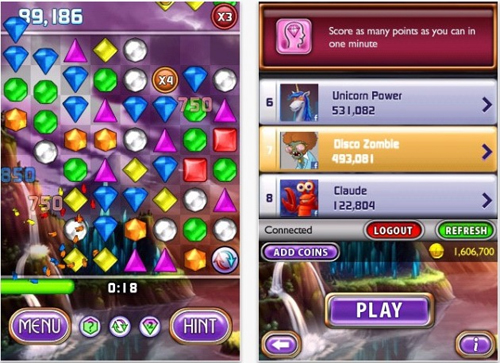
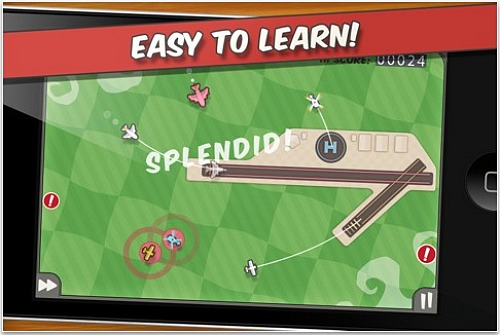

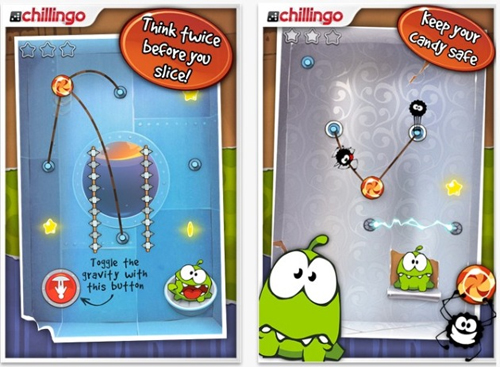
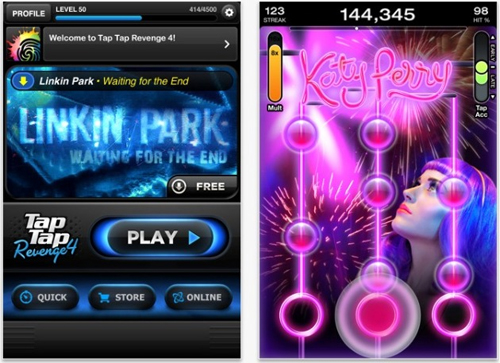
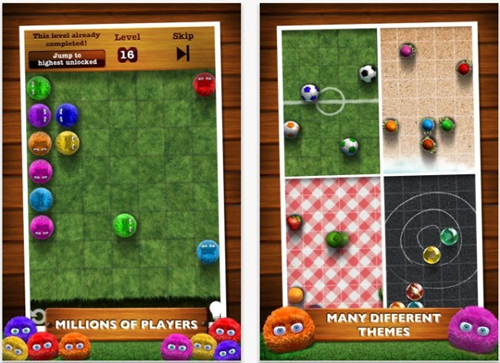
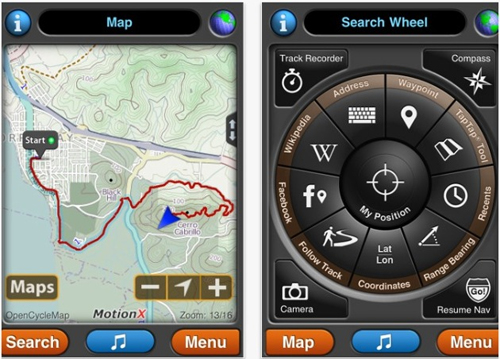
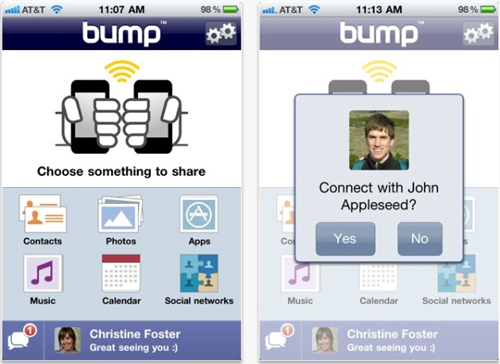
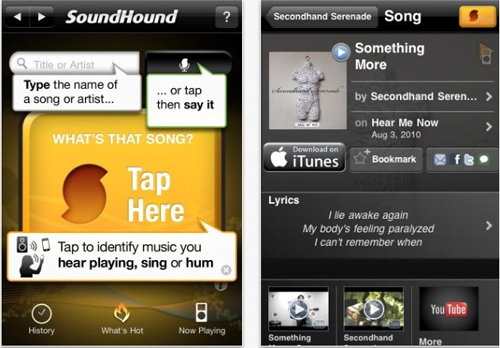
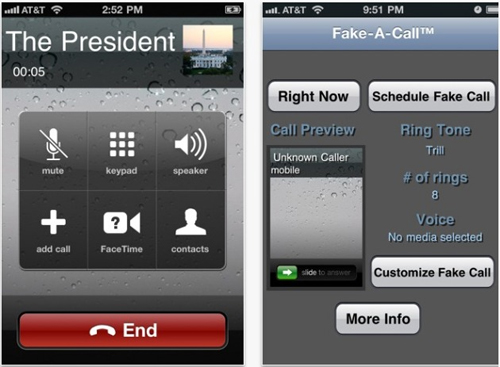














 闽公网安备35020302001549号
闽公网安备35020302001549号